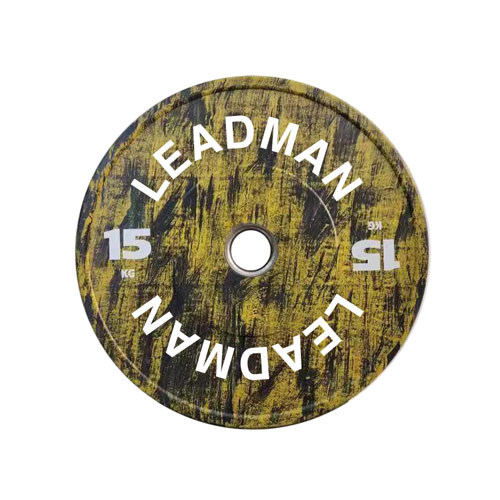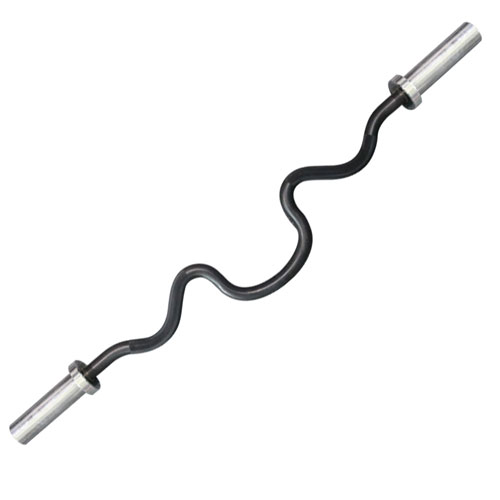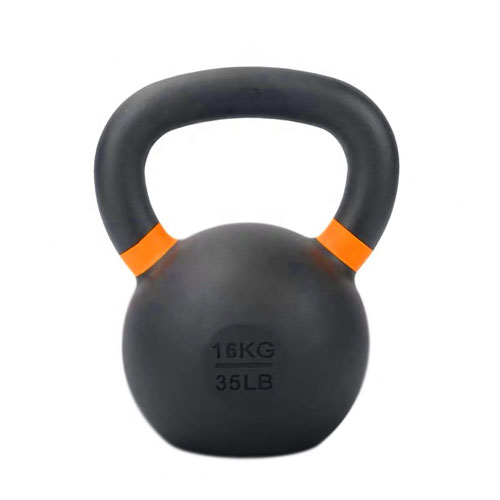Wie man Rost von seiner Hantel entfernt: Ein umfassender Leitfaden

A rusty barbell is a common sight, particularly in home gyms where equipment might not receive the same level of care and attention as in a commercial setting. The damp air, fluctuating temperatures, and occasional spills can all contribute to the formation of rust on your cherished weightlifting apparatus. This isn't just an aesthetic issue; a rusty barbell poses significant safety risks. Rust weakens the metal, potentially leading to fractures or breakage during use, resulting in serious injury. Furthermore, a compromised barbell can affect your workout, making it difficult to maintain proper form and potentially hindering your strength gains.
This blog post will equip you with the knowledge and techniques to effectively remove rust from your barbell, restoring its functionality and safety. We'll explore a range of methods, from simple home remedies to more advanced techniques. However, it's important to set realistic expectations: some rust damage may be too extensive for DIY solutions and might require professional intervention.
Bewertung des Schadens: Über wie viel Rost reden wir?
Before embarking on any rust removal process, carefully assess the extent of the damage. Two main types of rust are crucial to identify:
Oberflächenrost: This is characterized by a reddish-brown coating on the barbell's surface. It’s usually relatively easy to remove and doesn't significantly compromise the barbell's structural integrity. Surface rust often appears as a thin layer, easily scraped off with a fingernail.
Lochfraßrost: This is more serious. Pitting rust involves the corrosion penetrating deeper into the metal, creating pits and holes. This weakens the barbell considerably and poses a higher risk of failure during use. Pitting rust is often darker and more ingrained in the metal than surface rust.
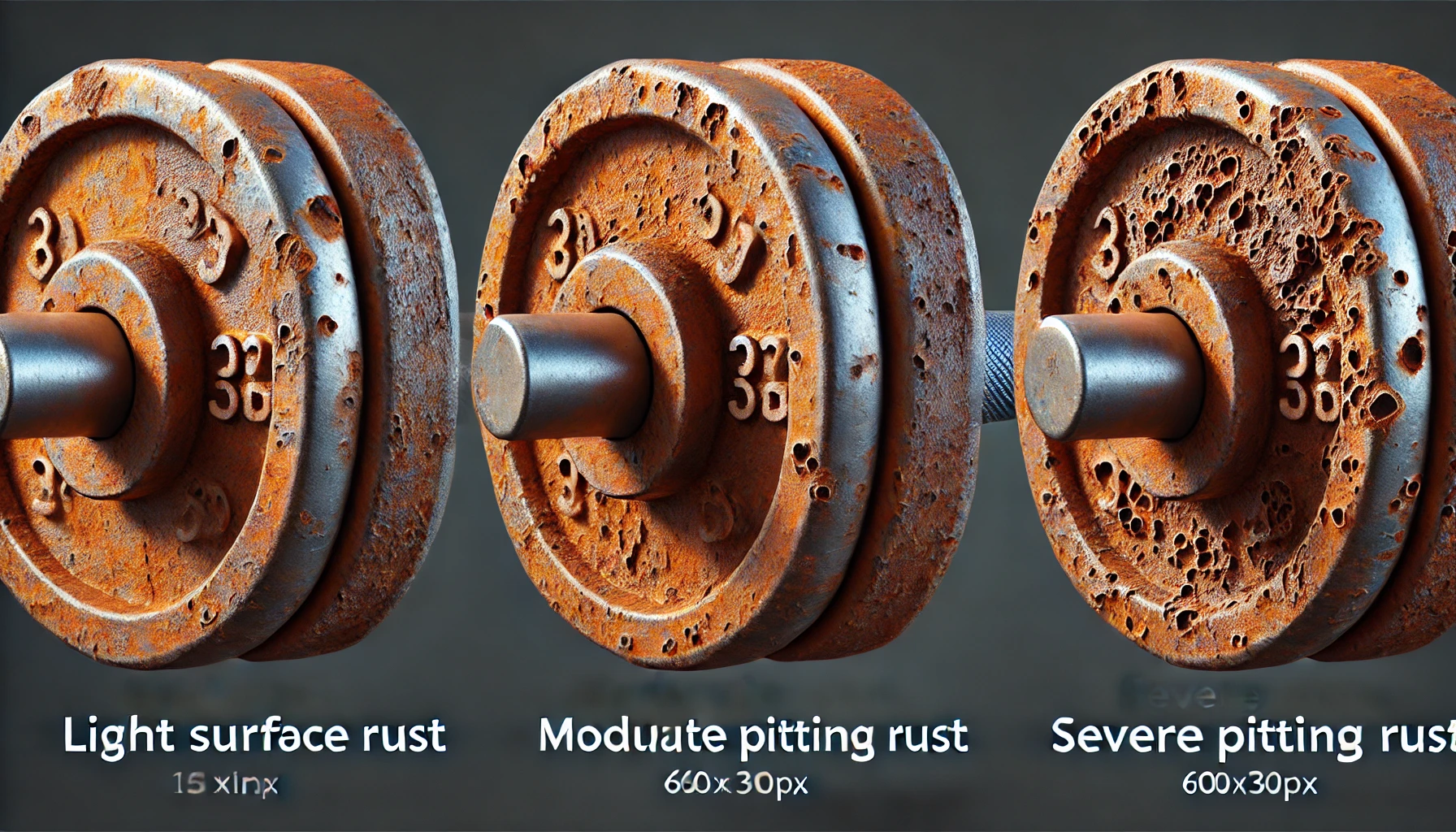
Über wie viel Rost reden wir hier?
Die Wahl der Reinigungsmethode richtet sich nach dem Schweregrad. Leichter Oberflächenrost kann oft mit einfachen Reinigungstechniken bekämpft werden. Bei mäßigem Lochfraß sind möglicherweise aggressivere Methoden erforderlich, während bei starkem Lochfraß oft professionelle Hilfe oder ein Austausch der Hanteln notwendig ist.
Sicherheit geht vor: Schutzausrüstung und Arbeitsbereich
Bei der Rostentfernung kommen scharfe Chemikalien und Schleifmittel zum Einsatz, weshalb die Sicherheit an erster Stelle steht. Tragen Sie immer die folgenden Kleidungsstücke:
- Handschuhe: Protect your hands from chemicals and sharp edges. Choose heavy-duty gloves suitable for the chosen method.
- Augenschutz:Eine Schutzbrille schützt Ihre Augen vor umherfliegenden Trümmern und Chemikalienspritzern.
- Schutz der Atemwege:Eine Staubmaske oder ein Atemschutzgerät ist unerlässlich, insbesondere bei der Verwendung von Schleifwerkzeugen oder chemischen Entfernungsmitteln, um das Einatmen von schädlichen Partikeln oder Dämpfen zu vermeiden.
Establish a well-ventilated workspace, ideally outdoors. If working indoors, ensure adequate ventilation to minimize exposure to fumes. Proper disposal of used materials is also crucial. Follow local regulations for disposing of chemical waste and sharp objects.
Methode 1: Einfache Reinigung - für leichten Oberflächenrost
For barbells with light surface rust, a simple cleaning might suffice. This involves using a wire brush to physically remove the rust.
Auswahl der Drahtbürste: Several types of wire brushes are available. Steel wool is effective but can leave scratches. Brass wire brushes are gentler and less likely to damage the barbell's finish. Choose the brush appropriate for the barbell's material and the severity of the rust.
Reinigungsprozess: Apply soapy water to the barbell. Using firm but controlled strokes, scrub the rusted areas with the wire brush. A scrubbing pad can augment the cleaning power, especially in crevices. Rinse thoroughly with clean water to remove all traces of soap and rust particles. Finally, dry the barbell completely with a clean cloth.
Methode 2: Einweichen mit Essig - ein natürlicher Ansatz
Vinegar's acidity effectively dissolves rust. This method is suitable for moderate surface rust and is environmentally friendly.
Einweichverfahren: Submerge the rusty barbell in a container large enough to fully immerse it. Fill the container with white vinegar, ensuring the barbell is completely covered. The soaking time depends on the rust severity; light rust might only require a few hours, while heavier rust may need up to 24 hours or even longer.
Steigerung der Effektivität (fakultativ): Adding salt to the vinegar solution enhances its rust-removing capabilities. The salt acts as an electrolyte, speeding up the chemical reaction.
Reinigung nach dem Einweichen: After soaking, remove the barbell and rinse it thoroughly with water. Use a wire brush or scrubbing pad to remove any remaining loosened rust. Dry thoroughly.
Methode 3: Baking Soda Paste - sanftes Abschleifen
Für empfindliche Stellen oder leichteren Rost bietet eine Backpulverpaste eine sanftere Lösung.
Zubereitung der Paste: Mix baking soda with water to form a thick paste. Apply the paste to the rusted areas using a cloth or sponge.
Anwendung und Abwaschen: Gently scrub the paste onto the rusted surface using a soft-bristled brush or a non-abrasive cloth. Avoid excessive scrubbing, which could damage the barbell.
Spülung und Trocknung:Spülen Sie die Hantel gründlich mit Wasser ab, um alle Spuren der Paste zu entfernen, und lassen Sie sie vollständig trocknen.
Methode 4: Handelsübliche Rostentferner - für hartnäckigen Rost
Handelsübliche Rostentferner bieten stärkere Lösungen für hartnäckigen Rost.
Produktauswahl: A wide array of commercial rust removers is available in gels, liquids, and sprays. Choose a product appropriate for your barbell material and the severity of the rust.
Sicherheitsvorkehrungen: Always read and follow the manufacturer's instructions carefully. Wear appropriate protective gear (gloves, eye protection, respirator). Work in a well-ventilated area.
Anwendung: Apply the rust remover according to the manufacturer's instructions. This may involve brushing, spraying, or soaking. Allow sufficient time for the product to work its magic.
Beseitigung:Entsorgen Sie verbrauchten Rostentferner gemäß den Anweisungen des Herstellers und den örtlichen Vorschriften.
Methode 5: Elektrolyse - Die fortgeschrittene Technik
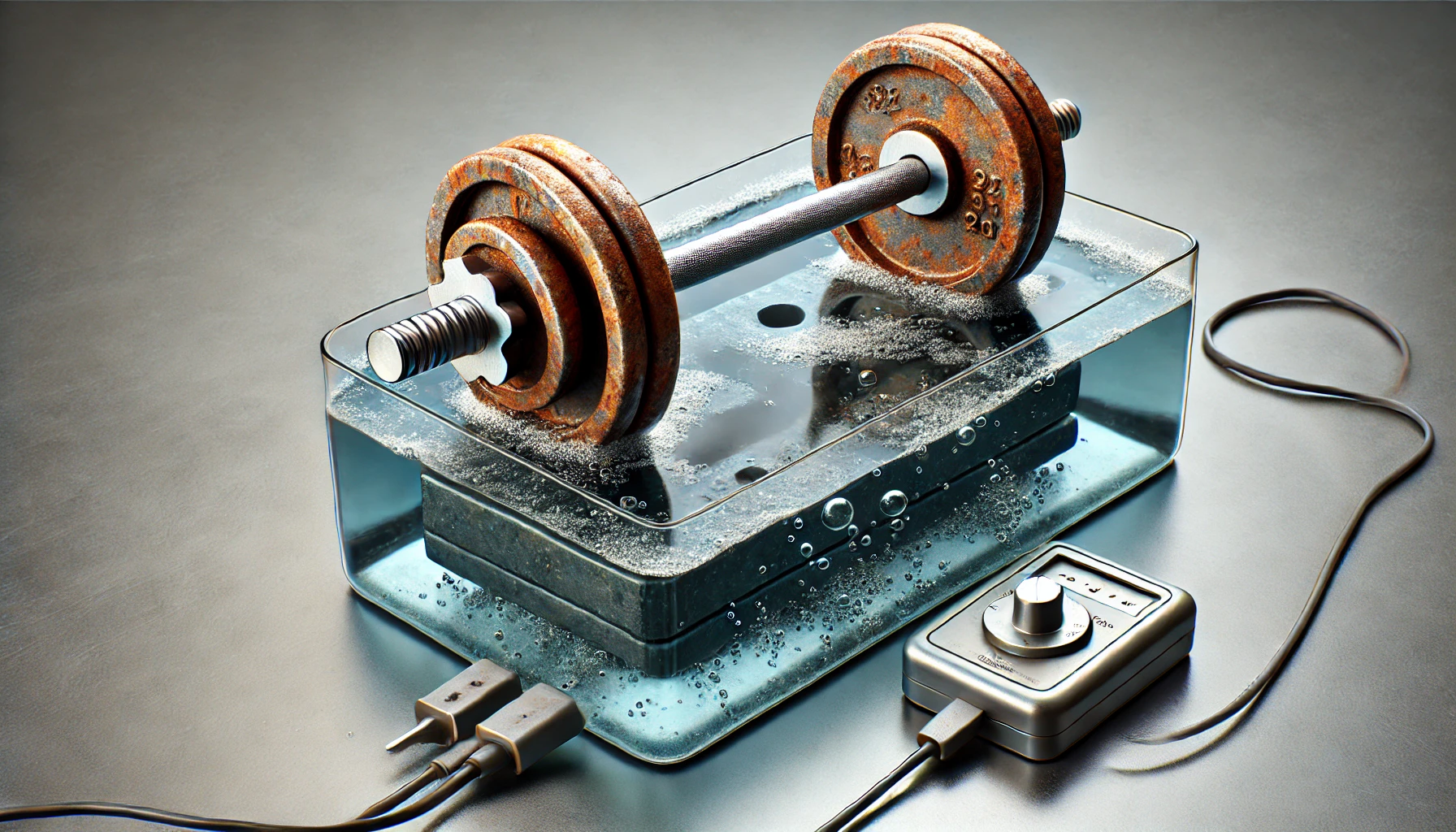
Elektrolyse - Die fortgeschrittene Technik
Die Elektrolyse ist eine fortschrittlichere Technik, die den Rost effektiv entfernt, ohne das darunterliegende Metall zu beschädigen.
Prozess Erläuterung: Electrolysis uses an electric current to dissolve rust. The rusty barbell acts as the cathode (negative electrode), while another piece of metal (like a steel plate) serves as the anode (positive electrode). Both are submerged in an electrolyte solution (like baking soda and water). The current pulls the iron oxide (rust) from the barbell and deposits it on the anode.
Erforderliche Materialien:Du brauchst eine Stromquelle (ein Batterieladegerät funktioniert gut), einen Behälter für die Elektrolytlösung, die Elektrolytlösung selbst, die rostige Hantel (Kathode) und eine Opferanode.
Einrichten: Connect the positive terminal of the power source to the anode and the negative terminal to the cathode. Submerge both in the electrolyte solution, ensuring they don't touch.
Vorteile und Nachteile:Die Elektrolyse ist sehr wirksam, vor allem bei stark verrosteten Gegenständen, erfordert aber eine spezielle Ausrüstung und technische Kenntnisse.
Nach der Behandlung: Schutz der Hantel
Ist der Rost erst einmal entfernt, ist es wichtig, seine Wiederkehr zu verhindern.
Gründliche Trocknung:Trocknen Sie die Hantel vollständig ab, um zu verhindern, dass die Feuchtigkeit zu weiterer Rostbildung führt.
Schutzbeschichtung: Apply a protective coating to prevent future rust. Options include oil (WD-40, gun oil) or specialized rust-preventative paint.
Wann Sie professionelle Hilfe in Anspruch nehmen sollten
If the rust damage is severe (extensive pitting, significant weakening of the metal), attempting DIY methods might be futile or even dangerous. In such cases, consider seeking professional help from a metal restoration specialist. They have the expertise and equipment to restore or replace severely damaged barbells.
Schlussfolgerung: Eine rostfreie Zukunft
Removing rust from your barbell requires careful assessment and the selection of an appropriate method. Simple cleaning is sufficient for light surface rust, while vinegar soaking, baking soda paste, or commercial rust removers can handle moderate rust. Electrolysis is an advanced option for heavily rusted barbells, but professional help may be necessary for extensive damage. Remember, preventing rust through proper storage and regular maintenance is key to keeping your barbell in optimal condition.
Siehe Blog >>Wie Sie die richtige Hantelscheibenaufbewahrung für Ihr Fitnessstudio auswählen



